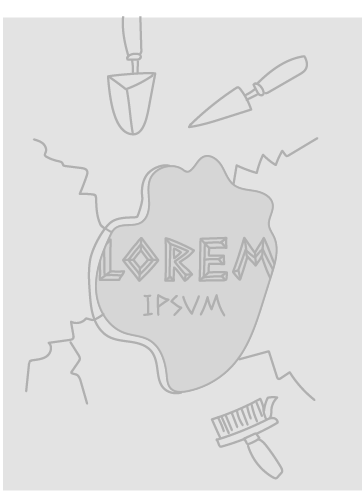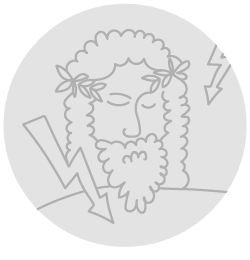Title of the work
Country of the First Edition
Country/countries of popularity
Original Language
First Edition Date
First Edition Details
Robert Byrd, The Hero and the Minotaur: The Fantastic Adventures of Theseus. New York: Dutton Children’s Books, 2005, 40 pp.
ISBN
Genre
Picture books
Target Audience
Children
Cover

We are still trying to obtain permission for posting the original cover.
Author of the Entry:
Elizabeth Hale, University of New England, ehale@une.edu.au
Peer-reviewer of the Entry:
Lisa Maurice, Bar-Ilan University, lisa.maurice@biu.ac.il
Susan Deacy, University of Roehampton, s.deacy@roehampton.ac.uk

Robert Byrd
, b. 1942
(Author, Illustrator)
Robert Byrd is an American artist, illustrator and writer of children’s books. He was born in Atlantic City, New Jersey, and studied at Trenton Junior College and the Philadelphia College of Art, where he now also teaches illustration. He lives in Haddonfield, New Jersey, and with his wife, Ginger, has two grown children. Byrd has illustrated numerous children’s books, often focusing on figures from history (including books on Leonardo da Vinci, Benjamin Franklin, Saint Francis, and Heinrich Schliemann), or retelling myths and folktales (Brave Chicken Little, Finn MacCoul and his Fearless Wife: A Giant of a Tale from Ireland, Jason and the Argonauts, Theseus and the Minotaur).
Sources:
Profile at en.wikipedia.org (accessed: February 18, 2019)
Profile at goodreads.com (accessed: February 18, 2019)
Profile at biography.jrank.org (accessed: February 18, 2019)
Bio prepared by Elizabeth Hale, University of New England, ehale@une.edu.au
Questionnaire
1. What drew you to writing/working with Classical Antiquity, what drew you to particular myths, and what challenges did you face in selecting, representing, or adapting particular myths or stories?
The myths can be seen as just really good stories, and some of them great adventures. The challenge is staying true to the original story, which can't be altered as they were considered to be of religious significance to the ancient Greeks. Dealing with all of the violence was always an issue for young readers.
2. Why do you think classical / ancient myths, history, and literature continue to resonate with young audiences?
I think part of he interest lies in the way the myths parallel our culture's fascination with super heroes and monsters, and their quests. This seems to be about power and dominance. They are everywhere there is imagery. I see it with art students. Look at our entertainment.
3. Do you have a background in classical education (Latin or Greek at school or classes at the University?) What sources are you using? Scholarly work? Wikipedia? Are there any books that made an impact on you in this respect?
My only background in mythology is what books I read as a child. I use every source I can; picture books, the internet, books, photography for pictorial reference. All of the versions of the myths for young readers were useful. I read as many "classical myth" collections as possible. Robert Graves collection of the Greek myths were very important, and his novel, Hercules My Shipmate was the finest written source (for Jason and the Argonauts). Graves himself points out the various discrepancies in the early tellings by the Greeks and Romans of the same myth.
4. How did you devise your particular artistic style/idiom/aesthetic for your works inspired by Classical Antiquity?
I did try to incorporate the Greek style into my work. The Greek vases were the most important source. I used the ancient Greek artists works for reference, and tried to merge their way of seeing things with how I draw. It is interesting to see how stylized the vases are, compared with the realism of some of their sculpture
5. Did you think about how Classical Antiquity would translate for young readers?
I hope a good story will connect with any generation. I hope my art enhances these stories.
6. How concerned were you with "accuracy" or "fidelit"’ to the original? (another way of saying that might be — that I think writers are often more "faithful" to originals in adapting its spirit rather than being tied down at the level of detail — is this something you thought about?)
As I mentioned, accuracy to the original story line was essential, but I had a lot of freedom in the drawing, composition, color, etc. We still don't know exactly what everything looked like.The ancient myths of course must be simplified for young readers, but I do try not to talk down to my audience. Children get it.
7. Are you planning any further forays into classical material?
At some point, another myth could be fun. Today publishing markets are always changing, and they dictate direction for children's books.
8. Anything else you think we should know?
My next book is Liberty Arrives, Dial, Penguin Random House 2019, the complete story of the Statue of Liberty.
Prepared by Elizabeth Hale, University of New England, ehale@une.edu.au
Summary
In this lavishly illustrated story of the ‘adventures of Theseus and his friends’ (endpapers), Robert Byrd explains the origins of Theseus’s birth and childhood, watched over by the sea-god Poseidon. His exploits as a child include standing up to Heracles, who enters the city of Troezen clad in the skin of a lion and lifting the boulder to find the golden sandals and sword of his father, King Aegeus (pp. 5–6). Excited by adventure, and the dream of meeting his father, Theseus sets off on his adventures. En route to Athens, he fights the strongmen Cercyon and Sinis (pp. 8–9), and the ogre Sciron (pp. 10–11) before being united with his delighted father (p. 12).
After the festivities are over, Theseus learns from his father about the tribute Athens must pay to King Minos. Theseus, angered, decides to go to end the curse, and sets sail in a ship with a black sail. Aegeus gives him a white sail to hoist on return. Theseus agrees, and eagerly sets forth on a new "thrilling adventure." (p. 14)
Approaching Crete, Theseus and his crew are amazed by the automaton, Talus, which protects the harbour entrance (p. 16). From a bluff, Ariadne watches the boat approach, in company with Icarus. Distressed by her father’s wickedness, she goes with Icarus to ask Daedalus for the secret to the labyrinth (p. 17), and at night gives Theseus a ball of twine, and a sword to help him. (pp. 18–19) Theseus makes his way through the labyrinth, where he finds the Minotaur, which opens "one glowing red eye" and stares at Theseus (pp. 20–21). Theseus fights the Minotaur, and stabs him (pp. 22–23) before making his way out of the labyrinth and fleeing Crete with Ariadne. Icarus remains behind, knowing that Minos will blame his father (pp. 24–25). As the ship makes its way out of the harbour, Poseidon sends a giant wave to smash Talus (p. 26). Minos, enraged, blames Daedalus and locks him and his son in a tower (p. 27), from which they make their famous escape (pp. 28–31). Oblivious, Ariadne and Theseus rest on Naxos (p. 32). Dionysus has been following them, and declares his love for Ariadne to Theseus. Theseus "had no choice but to leave, for he knew it would be foolish to challenge so mighty a god," (p. 34), and though Ariadne feels betrayed, she is soon married to Dionysus and comes to love him. On her death, the god places her crown in the sky, forming the constellation Corona Borealis (p. 35). Meanwhile, Theseus returns to Athens, exhausted and troubled, and forgets to change the sails. Aegeus plunges into the sea (p. 37), and though the Athenians raise Theseus up and proclaim him their greatest hero, he despairs at his own carelessness (p. 38). Bringing his mother to join him, he becomes a great and wise king.
The story is told through word and image. Images are lavish, highly detailed, covering full pages, and surrounding the text. Endpapers show the route of Theseus’s journey.
Analysis
Byrd’s retelling of the Theseus myth is detailed, incorporating back-story and side-deeds. The brightly coloured illustrations show the ability of the myth to inspire lavish artistic works. The human figures are stylised in reference to figures on Greek vases, often shown in profile, and authentically dressed (in the style depicted in Classical Greek vases). The labyrinth’s design is inspired by the remains at Knossos. The monsters are depicted as huge, in comparison with the human figures, to show their scale and fearsomeness. Byrd explores the ambivalent aspects of Theseus’s character (his adventurousness and his carelessness), reflecting on his growth from careless and adventure-seeking to wise and thoughtful, tempered by his experiences and later by his mother’s wisdom. Overall it is a sympathetic portrayal, and Theseus’s abandonment of Ariadne is softened, as is his carelessness over the sails.
A subtle sub-theme is that of family. In this retelling, families stay together or split apart, and the love of parents for their children is emphasized. Poseidon loves Aethra, and watches over Theseus accordingly. Minos is devastated by Ariadne’s betrayal and visits vengeance on Daedalus. Daedalus’ attempt to escape with his son results in Icarus’s death and Daedalus’ devastation. Theseus’s love for his mother tempers his later character (in that her presence helps him make wise decisions), as does his devastation at his father, Aegeus’s death. Poseidon watches protectively over Theseus (the narrative glosses over the idea of Theseus’s two fathers). Dionysus places Ariadne’s crown in the sky when she dies. Byrd depicts a narrative that is full of harsh actions and dark events, yet tempered by love and family.


